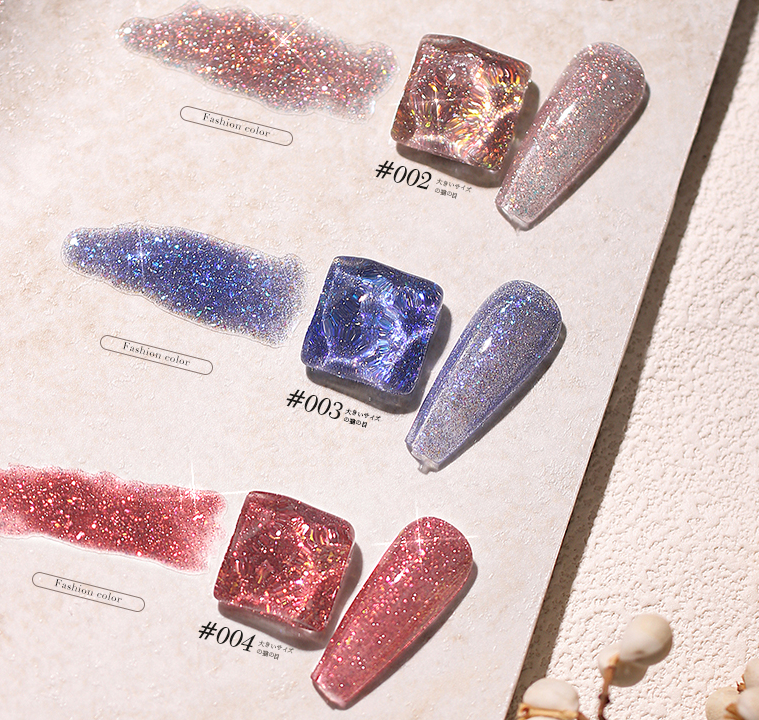Are coco nails safe for people with allergies or sensitivities?

Coco nails, with their unique use of natural coconut shells, have gained popularity as a stunning and eco-friendly nail art style. However, individuals with allergies or sensitivities may have concerns about the safety of wearing coco nails. In this essay, we will explore the safety considerations for individuals with allergies or sensitivities when it comes to coco nails. By understanding the potential allergenic components and taking necessary precautions, individuals can make informed decisions and enjoy coco nails without compromising their health.
Body:
- Allergenic Potential of Coconut Shells: Coconut shells, the primary component of coco nails, are generally considered safe and are not known to be highly allergenic. However, there is a possibility that some individuals may have allergic reactions or sensitivities to coconut-based products. It is important to identify and understand the specific components of the coconut shell that may cause allergic reactions.
-
Potential Allergenic Components: a. Coconut Proteins: Protein allergens found in coconut shells, such as albumin and globulin, have the potential to trigger allergic reactions in susceptible individuals. These proteins are typically found in the meat of the coconut, rather than in the shell itself. However, it is possible for trace amounts of proteins to be present on the shell’s surface, posing a minimal risk of reaction
b. Coconut Oil: Coconut oil, often used for moisturization and conditioning in nail care products, can cause allergic reactions in some individuals. While the use of coconut oil in coco nails is minimal, it is important for individuals with coconut oil allergies to exercise caution.
c. Adhesive Products: Adhesive products used to secure the coconut shell pieces or powder to the nails can contain potential allergenic ingredients. It is important to check the ingredients list of the adhesive product and verify if any known allergenic substances, such as latex or formaldehyde, are present.
- Precautionary Measures for Individuals with Allergies or Sensitivities: a. Patch Test: Individuals with known allergies or sensitivities can perform a patch test before wearing coco nails. Apply a small amount of coconut shell piece or powder, along with the adhesive product, to a small area of skin, such as the inner forearm. Monitor the area for any allergic reactions, such as redness, itching, or swelling, for 48 hours. If any reaction occurs, it is advisable to avoid wearing coco nails.
b. Alternate Materials: Individuals with allergies or sensitivities to coconut-based products can consider alternative nail art materials that do not pose a risk. There are various eco-friendly and non-allergenic nail art options available, such as water-based nail polishes or other natural materials.
c. Consultation with a Dermatologist: If individuals have a history of severe allergies or sensitivities, it is advisable to consult with a dermatologist before trying coco nails. Dermatologists can provide personalized advice, evaluate any potential risks, and recommend suitable alternatives or precautions based on individual circumstances.
- Proper Application and Maintenance: a. Cleanliness and Sanitation: Maintaining proper cleanliness and sanitation during the application and removal of coco nails is essential to minimize the risk of allergic reactions or irritations. Properly cleaning the nails, ensuring the coco nail materials are free from dirt or debris, and using sterile tools and equipment contribute to a safer nail application process.
b. Adhesive Selection: Individuals with known allergies or sensitivities should carefully choose adhesive products that are free from common allergens. Opting for hypoallergenic or latex-free adhesive options can help reduce the risk of adverse reactions.
c. Regular Maintenance: Regular maintenance and proper removal of coco nails are important to prevent any potential skin irritation or damage. Individuals should follow recommended removal techniques, avoiding excessive force or harsh chemicals that could irritate the skin or nails.
- Awareness and Communication: Individuals with allergies or sensitivities should communicate their concerns and medical history to their nail technician or salon professional. By informing them about specific allergies or sensitivities, professionals can take appropriate precautions and make suitable recommendations to ensure a safe and enjoyable coco nail experience.
Conclusion: In conclusion, coco nails, while generally considered safe, may pose a risk for individuals with allergies or sensitivities. It is important for such individuals to be aware of potential allergenic components and take necessary precautions. Performing patch tests, considering alternative materials, and consulting with a dermatologist are important steps in ensuring a safe experience with coco nails. Proper application, cleanliness, and maintenance, as well as communication with professionals, are vital in reducing the risk of allergic reactions or skin irritations. By understanding the potential risks and taking necessary precautions, individuals can make informed decisions and enjoy the beauty of coco nails without compromising their health.